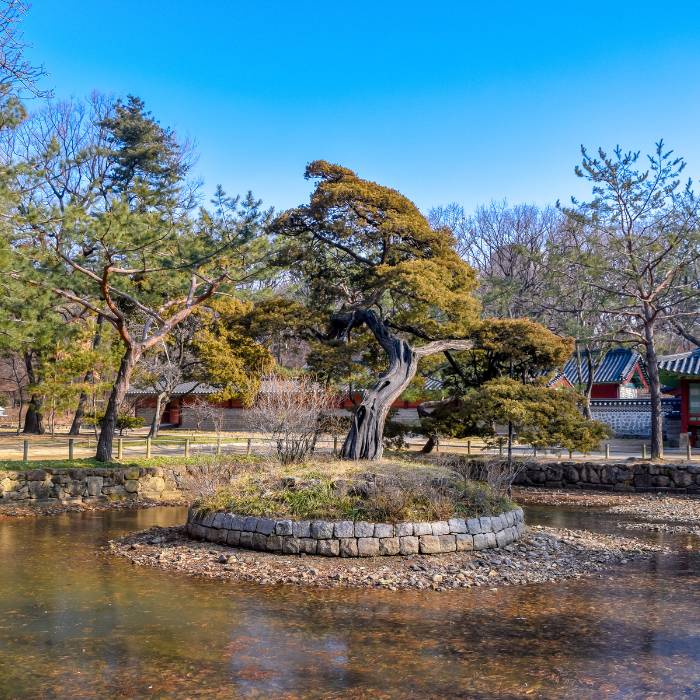Jongmyo Shrine: A Timeless Cultural Treasure in the Heart of Seoul
In the bustling heart of Seoul, amid the gleaming skyscrapers and neon-lit streets, lies a sanctuary of serenity and historical significance that has stood the test of time for over six centuries. Jongmyo Shrine (종묘, 宗廟), a UNESCO World Heritage Site, offers visitors a profound glimpse into Korea’s royal history and Confucian traditions.

The Sacred Royal Shrine of Joseon Dynasty
Nestled in Jongno-gu district of Seoul, Jongmyo serves as the ancestral shrine for the kings and queens of the Joseon Dynasty (1392-1910). This sacred space houses the spirit tablets (神主, 위패) of 27 kings and numerous queens, preserving their legacy through meticulous ceremonies that have continued uninterrupted for more than 500 years.
Built in 1395 by King Taejo, the founder of Joseon Dynasty, Jongmyo embodies the dynasty’s Confucian ideals and royal authority. Though destroyed during the Japanese invasion of 1592, it was faithfully reconstructed in 1608 and has since undergone careful preservation to maintain its original form and significance.
Architectural Marvel of Simplicity and Grandeur
What makes Jongmyo truly exceptional is its breathtaking architecture that balances simplicity with monumental scale. The main hall, Jeongjeon (정전), stretches an impressive 109 meters in length with 19 connected bays, making it one of the world’s largest single wooden structures of its time. Its unadorned design—free of colorful paintings and excessive decorations—reflects Confucian values of modesty and restraint.
The shrine’s high, thick walls and massive stone corner blocks not only ensure structural stability but also create a sacred boundary between the secular world and the divine realm within. The vast courtyards and straightforward architectural lines create an atmosphere of solemn dignity that immediately transports visitors to another time.
Beyond Jeongjeon lies Yeongnyeongjeon (영녕전), a separate shrine dedicated to King Taejo’s four direct ancestors and their consorts, further emphasizing the dynasty’s legitimate lineage.

Living Heritage: The Jongmyo Jerye Ceremony
What truly sets Jongmyo apart from other historical sites is that it remains a living cultural tradition. The Jongmyo Jerye, the royal ancestral ritual, has been performed here since the dynasty’s founding and continues to this day. This ceremony, designated as a UNESCO Intangible Cultural Heritage, is performed annually in May by descendants of the royal family.
During this remarkable ceremony, participants dressed in traditional court attire perform elaborate rituals accompanied by Jongmyo Jeryeak—ancient ritual music played on traditional instruments. This unique combination of architecture, ritual, and music creates a multi-sensory cultural experience that has remained essentially unchanged for centuries.
Visitor Experience: Walking Through History
Reopened to the public in April 2025 after extensive restoration work, Jongmyo offers visitors an unparalleled opportunity to experience Korea’s royal heritage. Guided tours are available in multiple languages, providing crucial context to fully appreciate the site’s significance.
As you walk through the shrine’s spacious grounds, the modern world seems to fade away. The carefully manicured pathways, ancient trees, and precisely arranged stone steps create a meditative atmosphere that encourages reflection. The site’s layout follows traditional principles of Korean geomancy (풍수), with buildings harmoniously integrated into the natural landscape.
For the most authentic experience, try to visit during the annual Jongmyo Jerye Festival in May when you can witness the full ceremonial rituals with traditional music and dance performances. Even on regular days, the shrine occasionally offers cultural demonstrations that bring history to life.

Practical Information for Visitors
- Location: 157 Jong-ro, Jongno-gu, Seoul (a short walk from Jongno 3-ga or Anguk subway stations)
- Hours: Open daily except Tuesdays, 9:00 AM to 6:00 PM (March-October) and 9:00 AM to 5:30 PM (November-February)
- Guided Tours: Available in English, Japanese, and Chinese at set times throughout the day
- Photography: Permitted in most areas but restricted during ceremonies
- Nearby Attractions: Changdeokgung Palace, Bukchon Hanok Village, and Insadong cultural street are all within walking distance
A Cultural Treasure Worth Experiencing
Jongmyo Shrine represents far more than just another tourist attraction—it’s a living embodiment of Korea’s cultural heritage and historical continuity. Its UNESCO World Heritage status recognizes not only its architectural significance but also the remarkable preservation of traditional rituals and music that continue to this day.
For visitors seeking to understand Korean history, Confucian philosophy, traditional architecture, or simply looking for a peaceful refuge from urban Seoul, Jongmyo offers a profound and memorable experience. In a city constantly reinventing itself, Jongmyo stands as a timeless reminder of Korea’s rich cultural foundations and the enduring legacy of its royal past.
Whether you’re a history enthusiast, a cultural explorer, or simply curious about Korean traditions, Jongmyo Shrine deserves a prominent place on your Seoul itinerary. It offers not just a glimpse into the past, but a living connection to traditions that continue to shape Korean identity in the modern world.